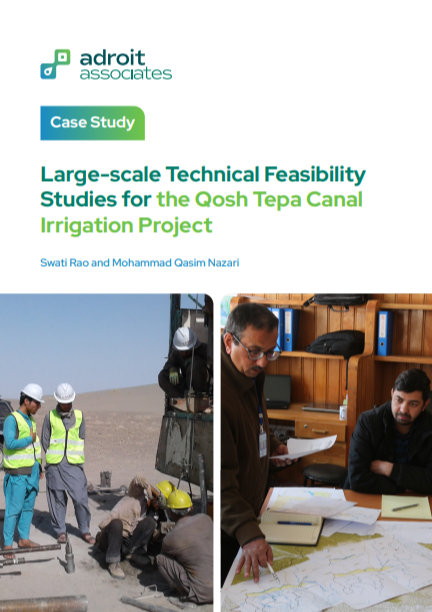
The Qosh Tepa Canal Irrigation Project (QTCIP) is one of Afghanistan’s most ambitious infrastructure initiatives aimed at transforming the agricultural landscape of the country’s northern provinces. As part of a USAID-supported initiative under the Strengthening Watershed and Irrigation Management (SWIM) program, Adroit Associates was tasked with leading comprehensive technical feasibility studies for this critical water infrastructure project.
From 2018 to 2021, Adroit conducted in-depth feasibility assessments to evaluate the canal’s potential to divert water from the Amu Darya River to irrigate over 500,000 hectares of farmland. Despite geopolitical sensitivities and operational challenges—including limited access, tight deadlines, and complex stakeholder coordination—Adroit produced some of the most detailed technical evaluations ever conducted in Afghanistan’s irrigation sector.
The two-phase feasibility study examined critical dimensions of the project, including hydrology, engineering design, climate change modeling, environmental and social impact assessments, water allocation strategies, and soil/geotechnical analysis. Our findings revealed that Qosh Tepa, due to its higher elevation, could support gravity-fed irrigation—an approach that would save over USD 590 million in capital and operational costs compared to alternatives like lift irrigation in Kaldar.
Key technical components of the study included:
- Hydrological modeling using HEC-HMS and WEAP
- Climate change scenario analysis (CSIRO GCM, RCP 6.0)
- Topographic surveys, soil and water testing (100+ wells, 130+ profiles)
- Environmental and social impact consultations with 15+ communities
- Comparative assessment of intake locations (Kaldar vs. Qosh Tepa)
While Adroit’s recommendation emphasized Qosh Tepa as the technically optimal site, the Afghan government ultimately selected Kaldar based on cost and logistical considerations. This divergence underscores the balance between engineering science and political feasibility.
The case study not only highlights our multidisciplinary expertise in irrigation, water resource planning, and environmental sustainability but also reflects the broader development challenges facing fragile, conflict-affected environments.
This undertaking is a testament to how evidence-based analysis can inform strategic infrastructure investments even in the most challenging contexts. It serves as a reference for engineers, planners, development agencies, and regional policymakers involved in large-scale water and climate-resilient infrastructure planning.


